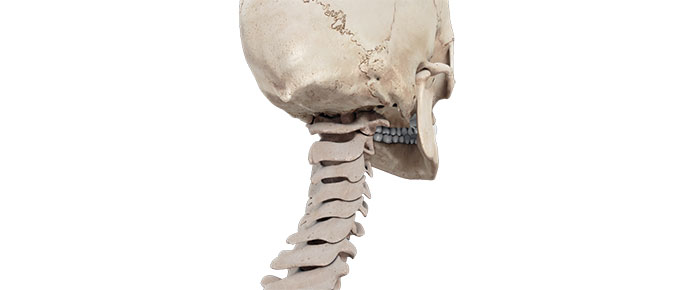Posterior-Anterior Mobilization: One of the Most Useful Tools for Examination and Treatment

In the mid-1990’s, I used to attend manual therapy courses that frequently lasted a full week (minimum 5 days). The five-day courses often had a 12-15 hour day set aside to discuss the biomechanics of the spine, including coupling, facet angles, and other dubious issues that were supposed to make us better manual clinicians. The courses pulverized those with poor endurance, punished the faint-hearted, and allowed the select few to achieve manual therapy excellence.
Introduction to Posterior-Anterior Mobilization
During the same decade, I took courses taught by other educators that introduced me to a technique known as the posterior-anterior (PA) mobilization. The PA involves applying light pressure to a given aspect of the spine – typically the spinous process, articular pillar, or transverse process – and then asking the patient if it reproduces their pain. Most clinicians also assess the “stiffness” of the segment, although this has lacked reliability. The PA was an unsophisticated assessment method that also worked quite well as a treatment technique. Earlier in my career, when I used the technique in practice, I was almost ashamed of its simplicity and success. How could something that didn’t require in-depth knowledge of geospatial angular metrics, fluxon calculus, and biomechanical complexities be so useful?
Historical Perception of PA
Many of my colleagues that had adopted the complex biomechanical approach to manual therapy assessment laughed at me for using the posterior-anterior examination technique. They called it “press and guess.” They said it was beneath them to use such a rudimentary procedure. Paradoxically, they asked “how can you trust a patient and their report of symptoms during your assessment?” They countered my use of the PA with their own preferences toward using their “hands,” which they identified as the most complex mechanism known to man (the hands are complex – it’s what happens in the head that reduces their value). They scoffed at how quickly my patients recovered and appreciated that I was able to focus on their problem.
The Role of Research in Understanding Clinical Utility
What a difference a few decades make! Unlike all the complex assessment techniques taught in the 1990’s, the posterior-anterior mobilization that was endorsed by Geoffrey Maitland and colleagues in the 1960’s has now been heavily studied, and we know the procedure has clinical utility. Early studies showed that it was very accurate in diagnosing the appropriate level of c-spine or lumbar spine. Later studies indicated that it was appropriate for differentiating the levels of cervicogenic headache origin. Our work demonstrated the sensitivity of a PA towards finding the chief complaint of the patient when assessed at baseline. Most recently, using a very complex and well powered study, Schneider and colleagues outlined its diagnostic utility for facet-related problems of the cervical spine.
Use of PA in Assessment Today
Currently, posterior-anterior mobilization is a standard assessment and treatment technique for most clinicians. It’s easy to learn, and it’s not difficult to administer. The keys to success involve engagement of the patient and understanding a good response upon application compared to a poor one. Within-session (same session) changes are good findings and between-session (from one visit to the next) changes are even better at predicting patient recovery. The examination and treatment techniques seem to provide neurophysiological bombardment of the joint and surrounding tissues and appear to function as a catalyst to normalize movement and decrease pain.
- Cook C, Hegedus E. Orthopedic Physical Examination Tests: An Evidence-Based Approach. 2nd edition. Upper Saddle River NJ; Prentice Hall: 2013.
- Jull G, Bogduk N, Marsland A. The accuracy of manual diagnosis for cervical zygapophysial joint pain syndromes. Med J Aus, 148 (1988), pp. 233–236
- Schneider GM, Jull G, Thomas K, Smith A, Emery C, Faris P, Cook C, Frizzell B, Salo P. Derivation of a clinical decision guide in the diagnosis of cervical facet joint pain. Arch Phys Med Rehabil. 2014 Sep;95(9):1695-701.
- King W, Lau P, Lees R, Bogduk N. The validity of manual examination in assessing patients with neck pain. Spine J. 2007 Jan-Feb;7(1):22-6. Epub 2006 Nov 28.
- Cook C, Lawrence J, Michalak K, Dhiraprasiddhi S, Donaldson M, Petersen S, Learman K. Is there preliminary value to a within and/or between-session change for determining short-term outcomes of manual therapy on mechanical neck pain? J Man Manip Ther. 2014 Nov;22(4):173-80.
- Cook C, Showalter C, Kabbaz V, O’Halloron B. Can a within/between session change in pain during reassessment predict outcome using a manual therapy intervention in patients with mechanical low back pain? Man Ther. 2012 Aug 17:17:325-9.
- Siegenthaler A1, Eichenberger U, Schmidlin K, Arendt-Nielsen L, Curatolo M. What does local tenderness say about the origin of pain? An investigation of cervical zygapophysial joint pain. Anesth Analg. 2010 Mar 1;110(3):923-7. doi: 10.1213/ANE.0b013e3181cbd8f4.




